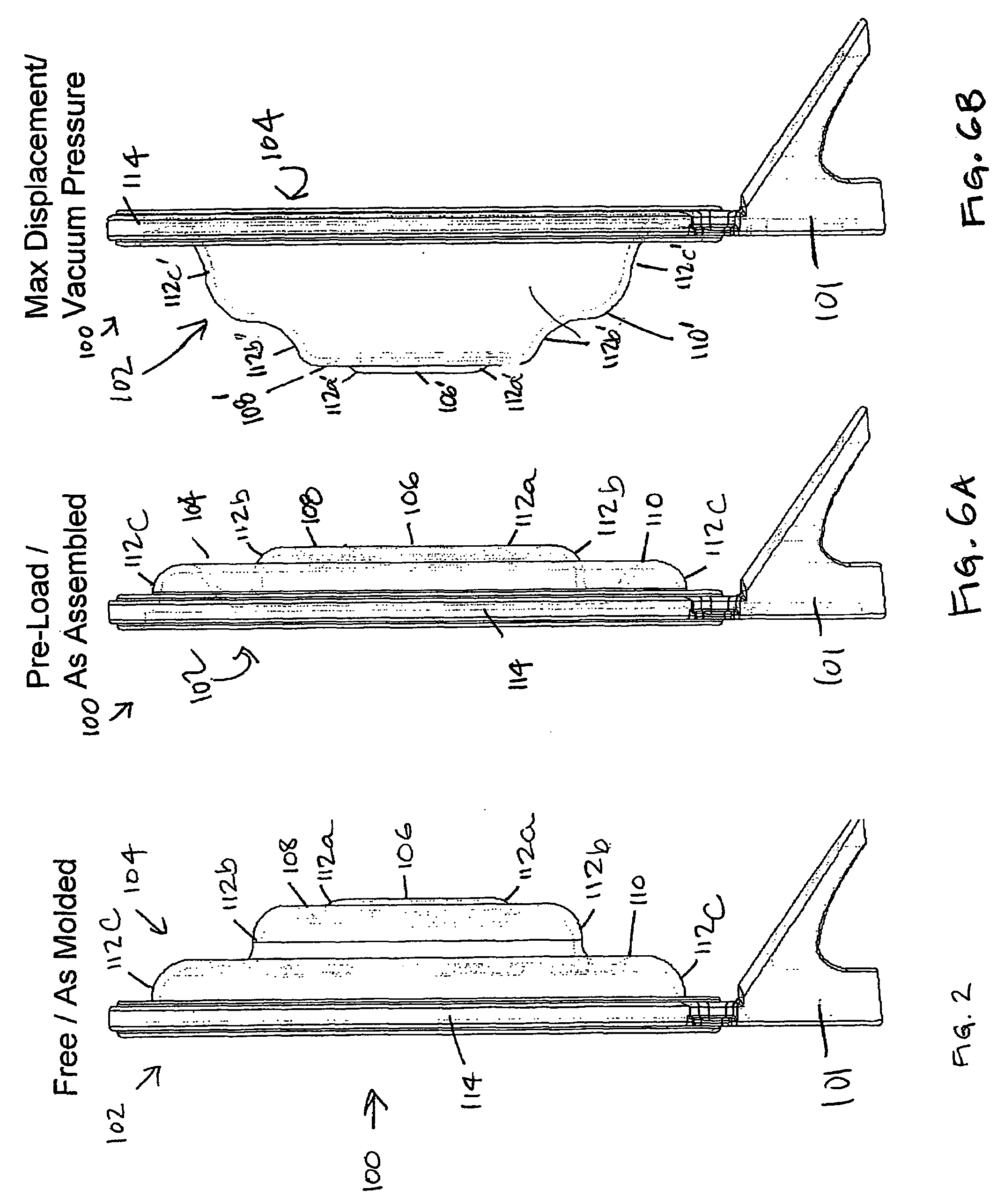Self returning contamination barrier
a technology of contamination barrier and self-returning, which is applied in the direction of suction device, intravenous device, other medical devices, etc., can solve the problems of membrane collapse or movement, difficult cleaning, and limited use orientation of breast shield, etc., and achieves high-efficiency vacuum transfer and increased pressure
- Summary
- Abstract
- Description
- Claims
- Application Information
AI Technical Summary
Benefits of technology
Problems solved by technology
Method used
Image
Examples
Embodiment Construction
[0045]Although the embodiments of the present invention described herein are directed to breastpump assembly systems, which is the particular environment that the invention finds its origin, it is contemplated that the present invention has various other applications, such as any pump system that requires a barrier to prevent contamination, or that may benefit from a movable membrane that is very efficient in transmitting pressure changes from a volume (or working fluid) on one side to a volume (or working fluid) on the other side.
[0046]The barrier of the present invention works with simple manually operated breastpumps that may provide only suction (and a vent to atmosphere), as well as more complex pumps, such as motorized pumps, and pumps providing both suction and a positive pressure. Thus, while described in particular respects with a source of vacuum, the pressure source could also be a positive pressure moving the barrier.
[0047]FIGS. 1A and 1B illustrate a self-returning cont...
PUM
| Property | Measurement | Unit |
|---|---|---|
| pressure | aaaaa | aaaaa |
| pressure | aaaaa | aaaaa |
| atmospheric pressure | aaaaa | aaaaa |
Abstract
Description
Claims
Application Information
 Login to View More
Login to View More - R&D
- Intellectual Property
- Life Sciences
- Materials
- Tech Scout
- Unparalleled Data Quality
- Higher Quality Content
- 60% Fewer Hallucinations
Browse by: Latest US Patents, China's latest patents, Technical Efficacy Thesaurus, Application Domain, Technology Topic, Popular Technical Reports.
© 2025 PatSnap. All rights reserved.Legal|Privacy policy|Modern Slavery Act Transparency Statement|Sitemap|About US| Contact US: help@patsnap.com



